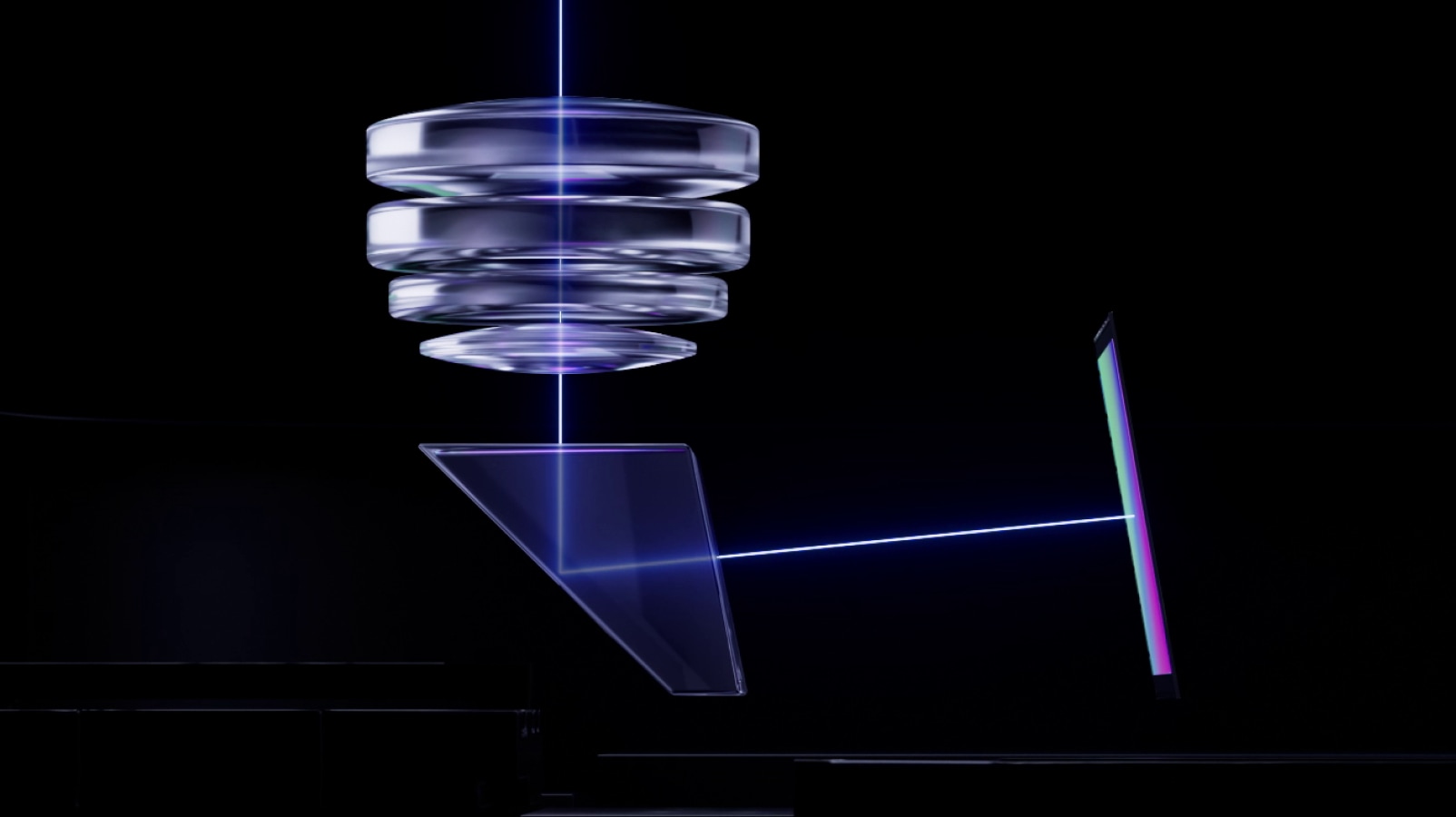
Periscope telephoto camera lenses have revolutionized the optical zoom capabilities of camera phones. A conventional lens, facing front-back in a phone, is limited to around 3x zoom before the length of the lens' optical stack becomes so long that the phone needs an excessively thick camera bump to accommodate it. To solve this, manufacturers use a periscope lens, whereby light enters through the back of the phone and is immediately redirected through 90 degrees by a prism. The light then passes sideways within the phone, through the lens elements and into the image sensor. With the optical stack and sensor placed at right-angles to a conventionally-mounted phone camera module, there's more room within the width of the phone to space out the lens elements for a longer telephoto focal length.
Read more: What is a periscope lens?

But, according to Samsung, arranging lens elements in this way restricts both the diameter of each element, and the size of the image sensor. To increase either of these means increasing the overall thickness of the phone - or more specifically, the phone's camera bump/island - and nobody wants a huge mound of camera island. This therefore limits the maximum lens aperture of a periscope telephoto camera, as a larger lens aperture typically requires larger-diameter lens elements. Likewise, restricting a sensor's physical dimensions directly impacts the module's image quality.

Samsung's answer is to retain the basic periscope lens principle of angling incoming light via a prism to an image sensor placed at right-angles to the main body of the phone. But Samsung wants to reposition the lens elements so they're ahead of the prism, back in their conventional location on the same plane as the phone's back panel. Samsung calls this design 'All Lenses on Prism (ALoP)', and by positioning the lens elements in this orientation, lens diameter (and therefore the lens aperture) can be increased without affecting the thickness of the phone. Another benefit is the space occupied within the phone body by this new telephoto module is also reduced, freeing up room for other phone components.

Samsung states that its ALoP design can incorporate an f/2.58 lens and an 80mm focal length. The image sensor in the module is placed 10 degrees off vertical, with the light angled through a 40˚-tilted prism reflection surface, all in the name of reducing the module’s overall height. The end result is reduced camera bump thickness, as well as a circular front lens element aperture, rather than the usual signature rectangular aperture of a conventional periscope module (the result of having the rectangular prism placed before the lens elements).

While such a design may allow for larger diameter lens elements, and therefore a brighter, faster lens aperture, it doesn't seem to solve the sensor size limitations of a typical periscope module. In Samsung's ALoP module, the sensor is still placed at right-angles to the body of the phone (albeit now at a slight 10-degree tilt). Consequently, increasing sensor size would still mean the phone would have to be made thicker to accommodate it.
It’s also possible that placing the lens elements ahead of the prism could limit the overall focal length of an ALoP telephoto module. The whole point of a conventional periscope lens is that it enables a much greater distance across which the optical stack can be spread, thereby opening up possibilities for focal lengths of 135mm and beyond. When the lens elements are arranged front-back in the phone body, as in Samsung's design (and also a conventional camera module), you return to the same phone thickness constraints that a periscope module was designed to overcome. Therefore, while an ALoP module might work for an 80mm telephoto module, longer focal lengths may still require a traditional periscope lens arrangement.







